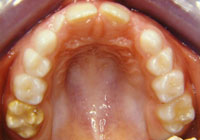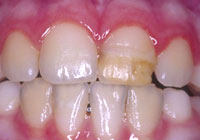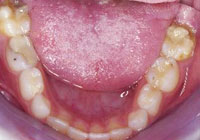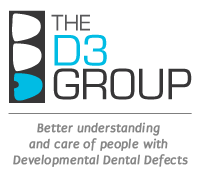Enamel Defect (Enamel Hypoplasia)
Enamel defect is a developmental dental defect (D3) which can be implicated as “weak” or “chalky” enamel with reduced thickness or enamel with poor quality. The most common sign is chalky spots or creamy yellow or brown or white patches on a child’s teeth. The “6-year-old molars” (first permanent molars) are the most prone to enamel defect.
Enamel is a protective layer on the visible part of the crown of the tooth. It is the hardest and most highly mineralized substance of the body. The formation of enamel is very sensitive, any disturbances occur during the tooth development can result in enamel defects, affecting the primary or permanent teeth.



What causes enamel defects?
There are many different risk factors have been linked to enamel defects in primary and permanent teeth in children. The most common risk factors include:
- Mother’s health during pregnancy (illnesses, diet deficiency)
- Prematurity
- Birth difficulties
- Medications given to mother prior birth or to child during early childhood
- Early childhood diseases (high fever, pneumonia, middle ear infection, viral infections etc.)
- Chronic / frequent childhood illness during first four years of life
- Poor childhood nutrition
- Trauma to mouth or primary teeth can cause localised enamel defects
Rarely, enamel defect can be inherited and is called Amelogenesis Imperfecta. Every primary and permanent tooth has abnormal enamel formation.
What are the dental problems as a result of enamel defects?
- Affected teeth can be fragile and may wear or lose enamel easily
- Increase risk of dental decay
- Tooth sensitivity from hot and cold foods and drinks if the underlying dentine layer is exposed
- Socially, child may feel embarrassed to smile
What are the treatment options for enamel defects in children?
The aim of treatment is to reduce tooth sensitivity, strengthen teeth and improve their appearance. Children with enamel defects should have dental check-up regularly (at least every 6 months). Type of treatment required will depend on the severity and symptoms of the enamel defect.
- Fluoride treatment and/or Tooth Mousse remineralizing cream)
- Restoration includes composite resin restoration or stainless steel crown.
- Extraction for very badly formed and decayed hypoplastic teeth followed by orthodontic management
Fore more helpful information about Enamel Defects, visit:








